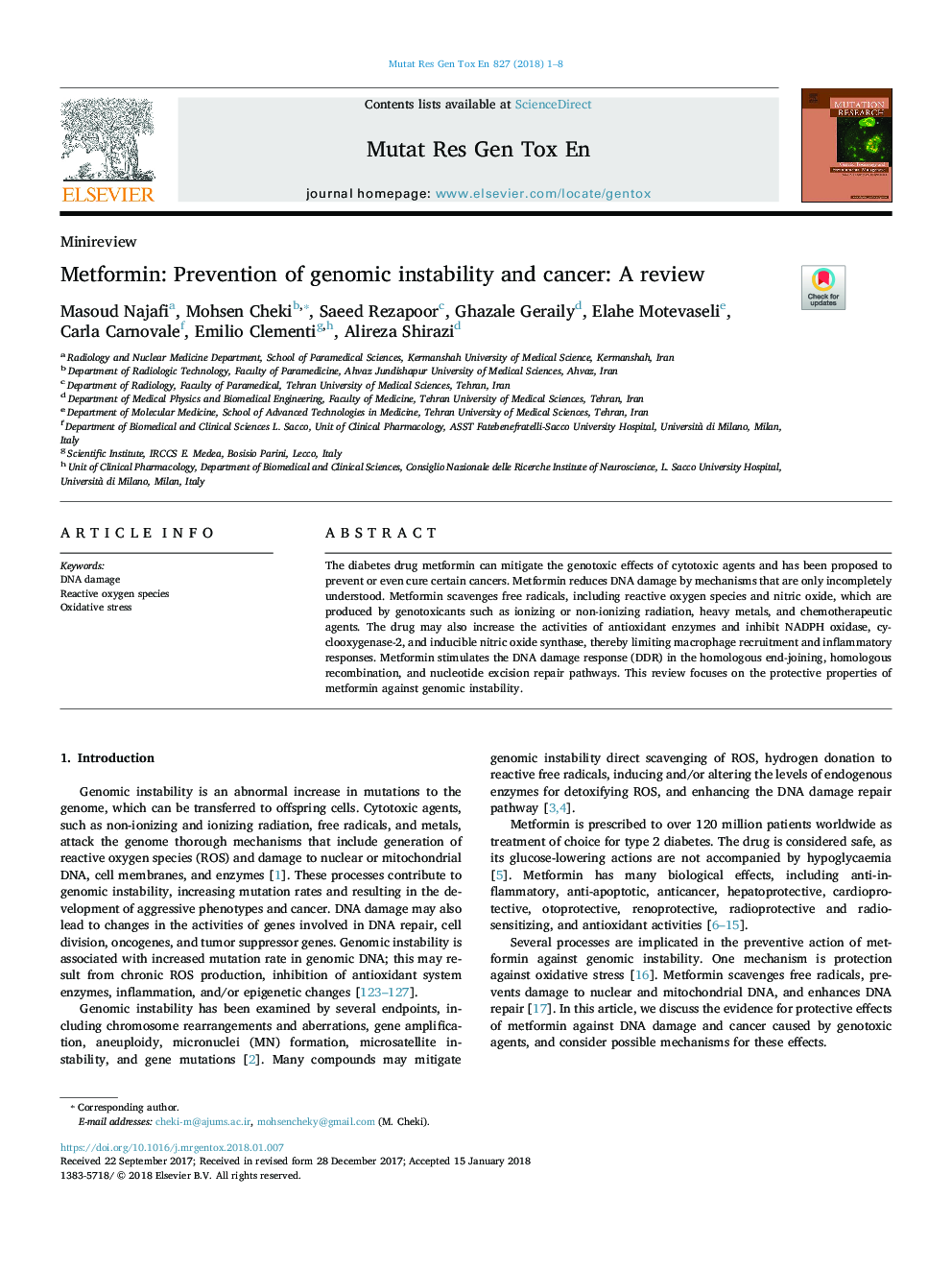| Article ID | Journal | Published Year | Pages | File Type |
|---|---|---|---|---|
| 8456219 | Mutation Research/Genetic Toxicology and Environmental Mutagenesis | 2018 | 8 Pages |
Abstract
The diabetes drug metformin can mitigate the genotoxic effects of cytotoxic agents and has been proposed to prevent or even cure certain cancers. Metformin reduces DNA damage by mechanisms that are only incompletely understood. Metformin scavenges free radicals, including reactive oxygen species and nitric oxide, which are produced by genotoxicants such as ionizing or non-ionizing radiation, heavy metals, and chemotherapeutic agents. The drug may also increase the activities of antioxidant enzymes and inhibit NADPH oxidase, cyclooxygenase-2, and inducible nitric oxide synthase, thereby limiting macrophage recruitment and inflammatory responses. Metformin stimulates the DNA damage response (DDR) in the homologous end-joining, homologous recombination, and nucleotide excision repair pathways. This review focuses on the protective properties of metformin against genomic instability.
Related Topics
Life Sciences
Biochemistry, Genetics and Molecular Biology
Cancer Research
Authors
Masoud Najafi, Mohsen Cheki, Saeed Rezapoor, Ghazale Geraily, Elahe Motevaseli, Carla Carnovale, Emilio Clementi, Alireza Shirazi,
